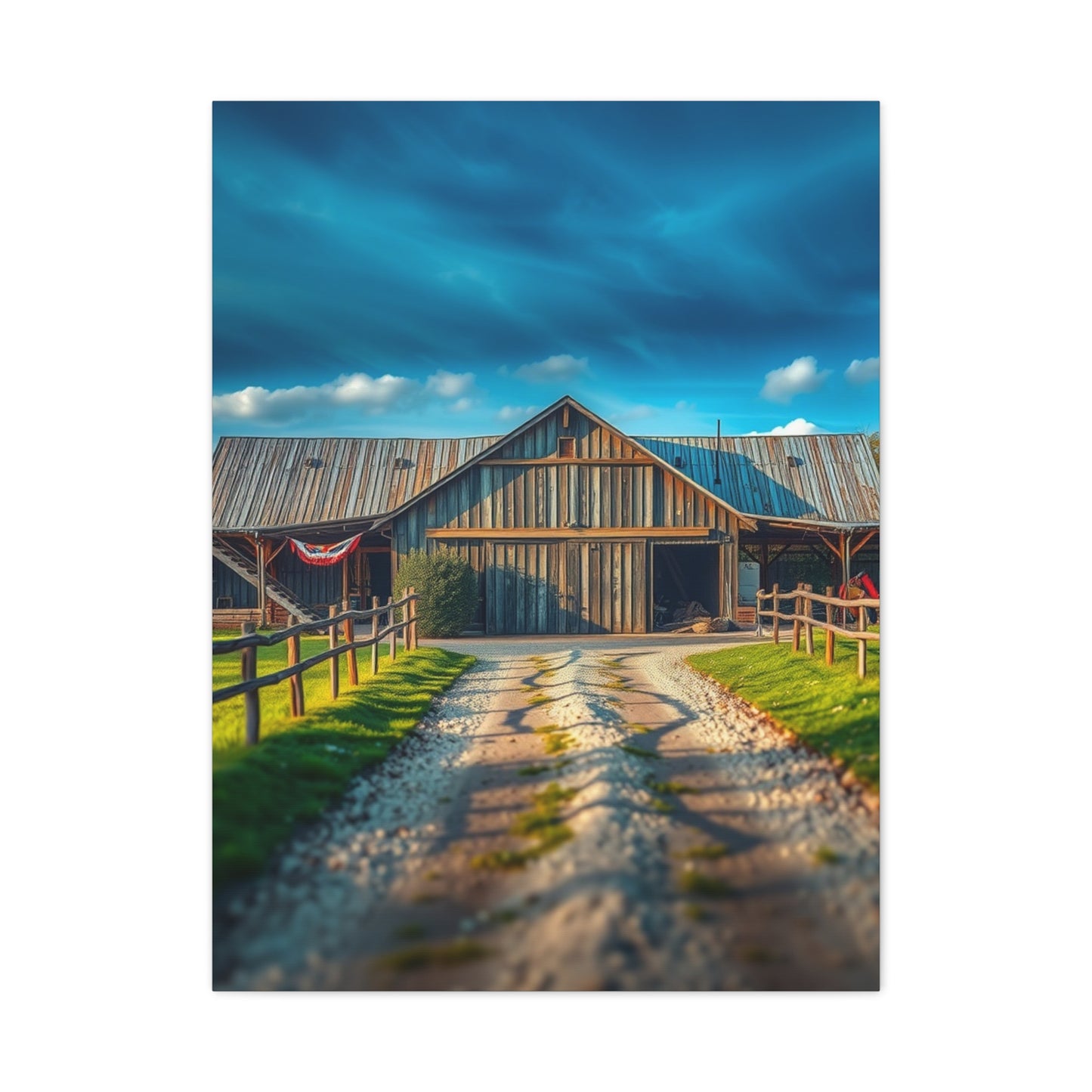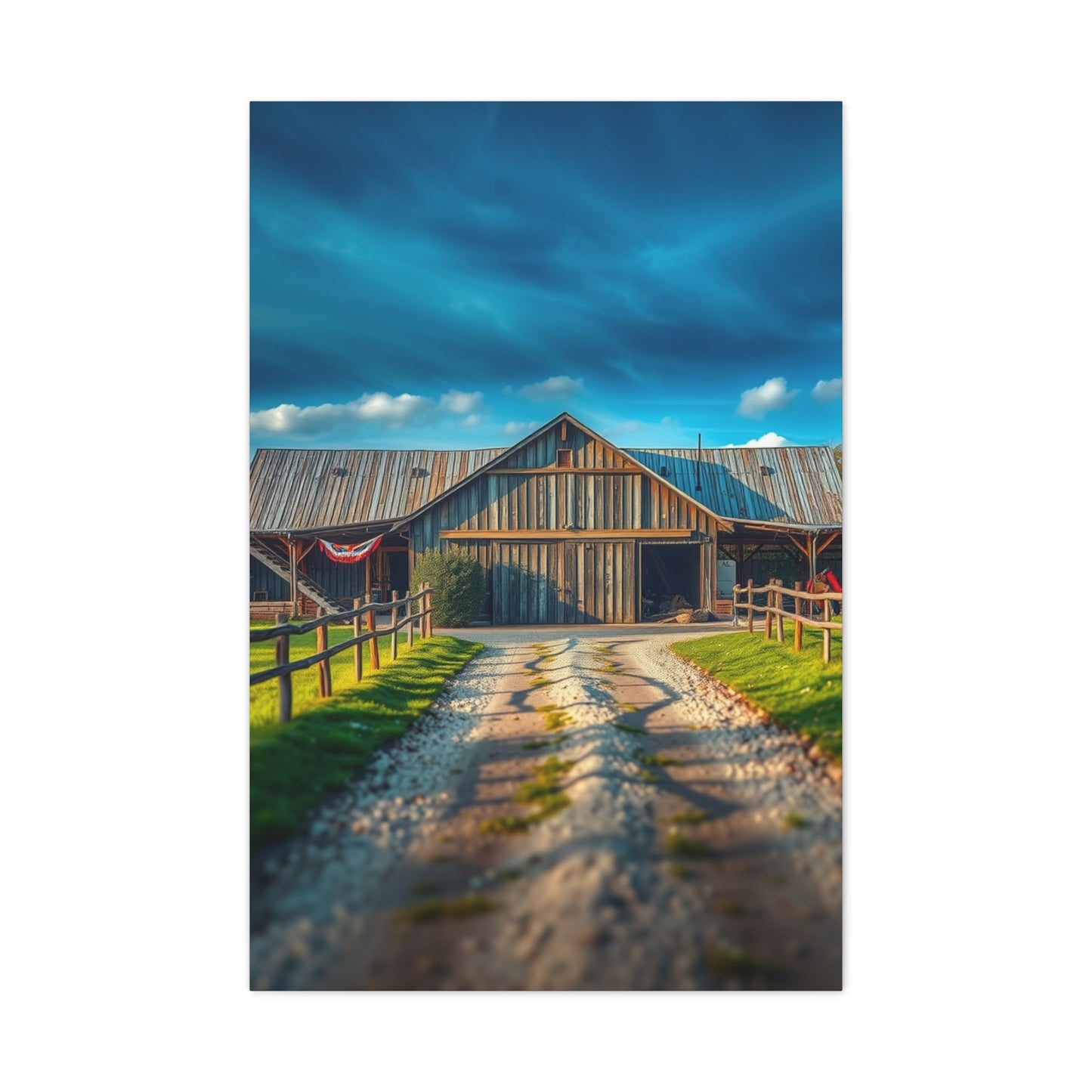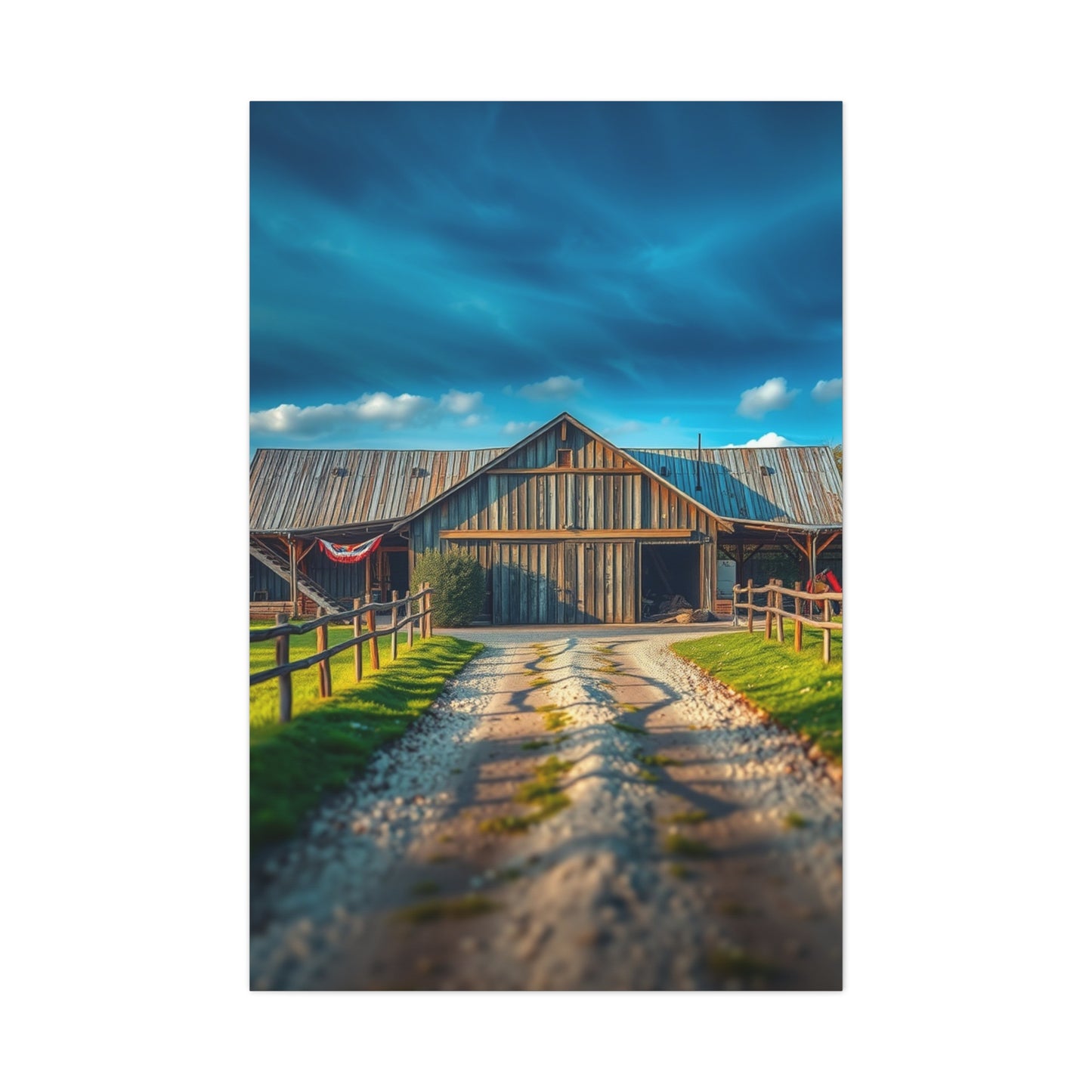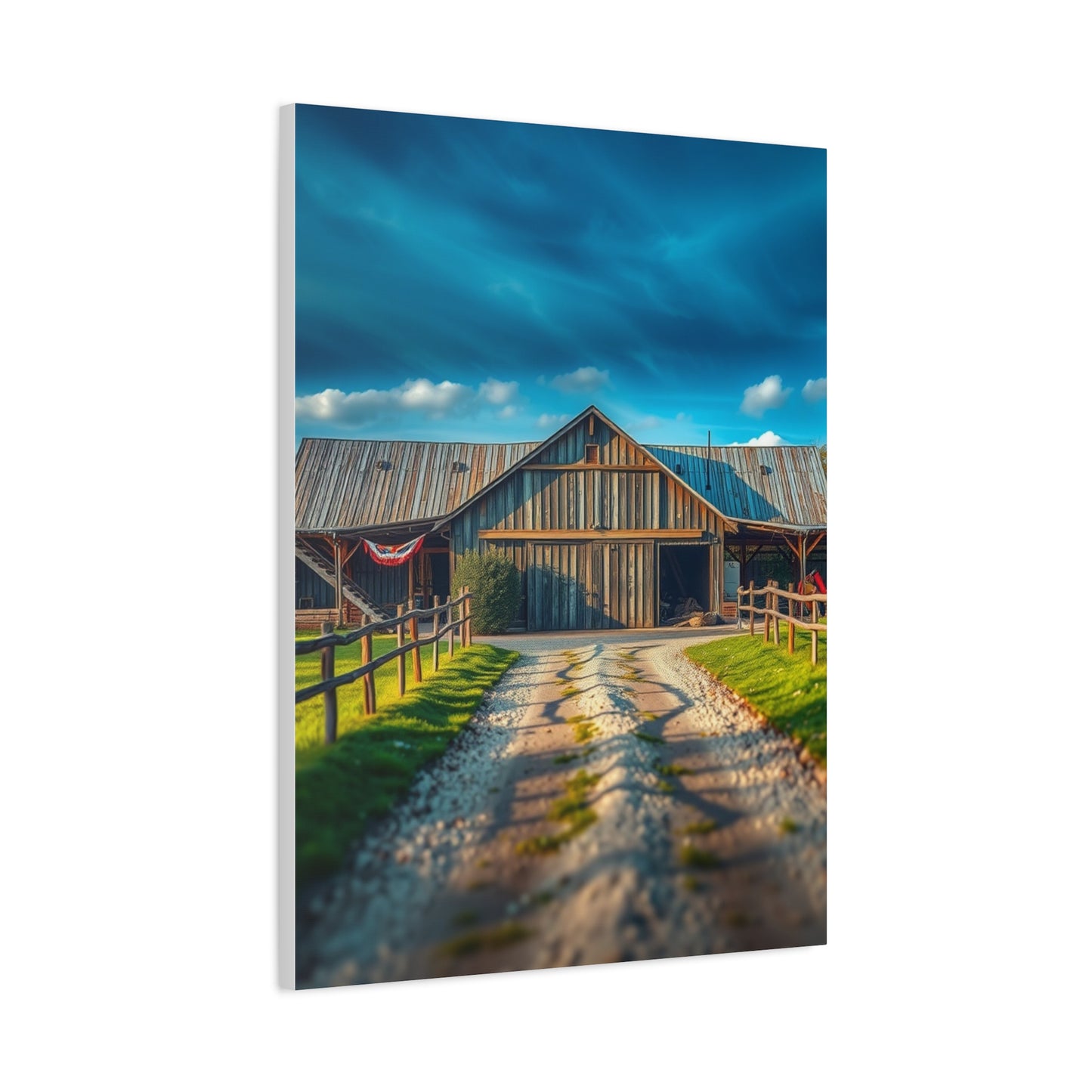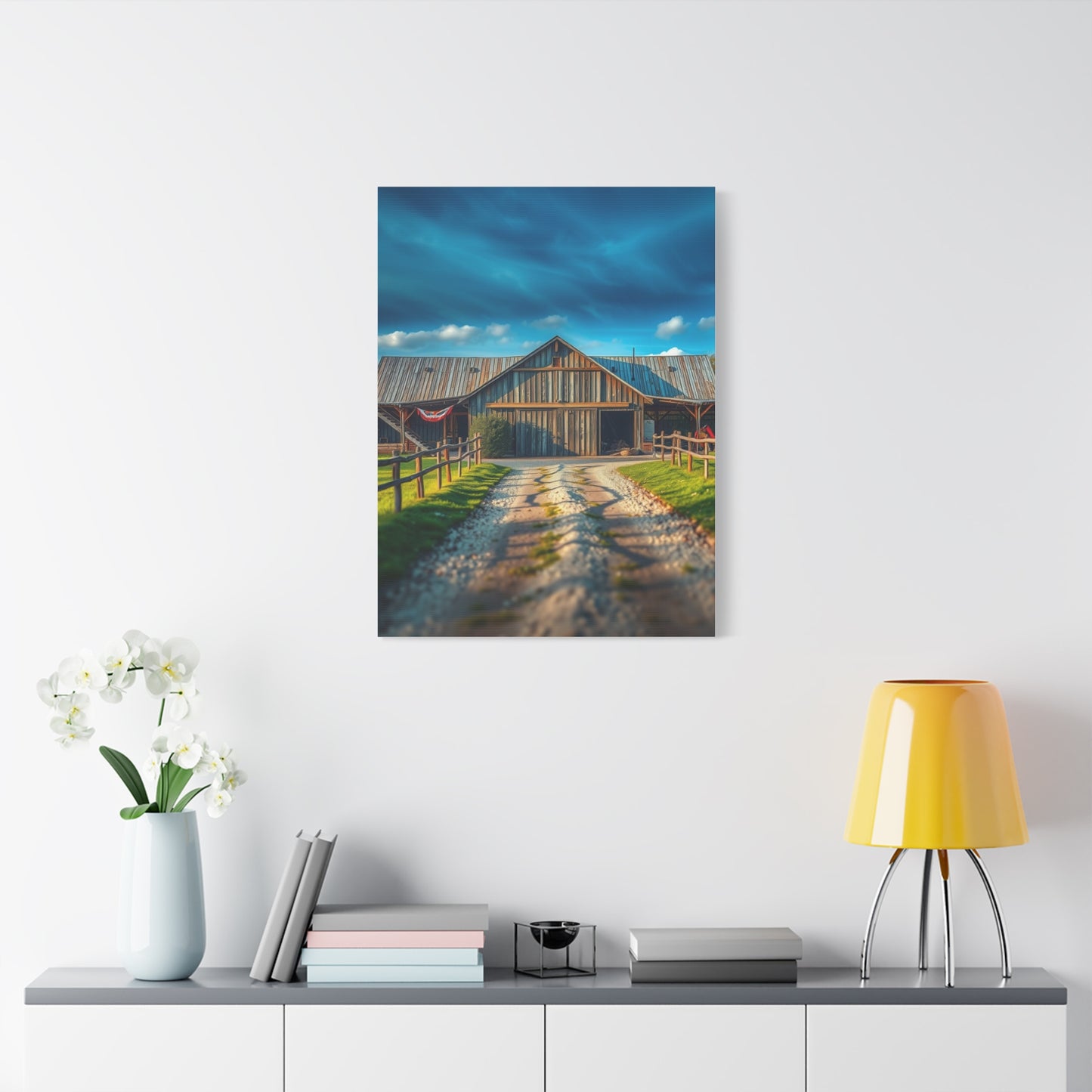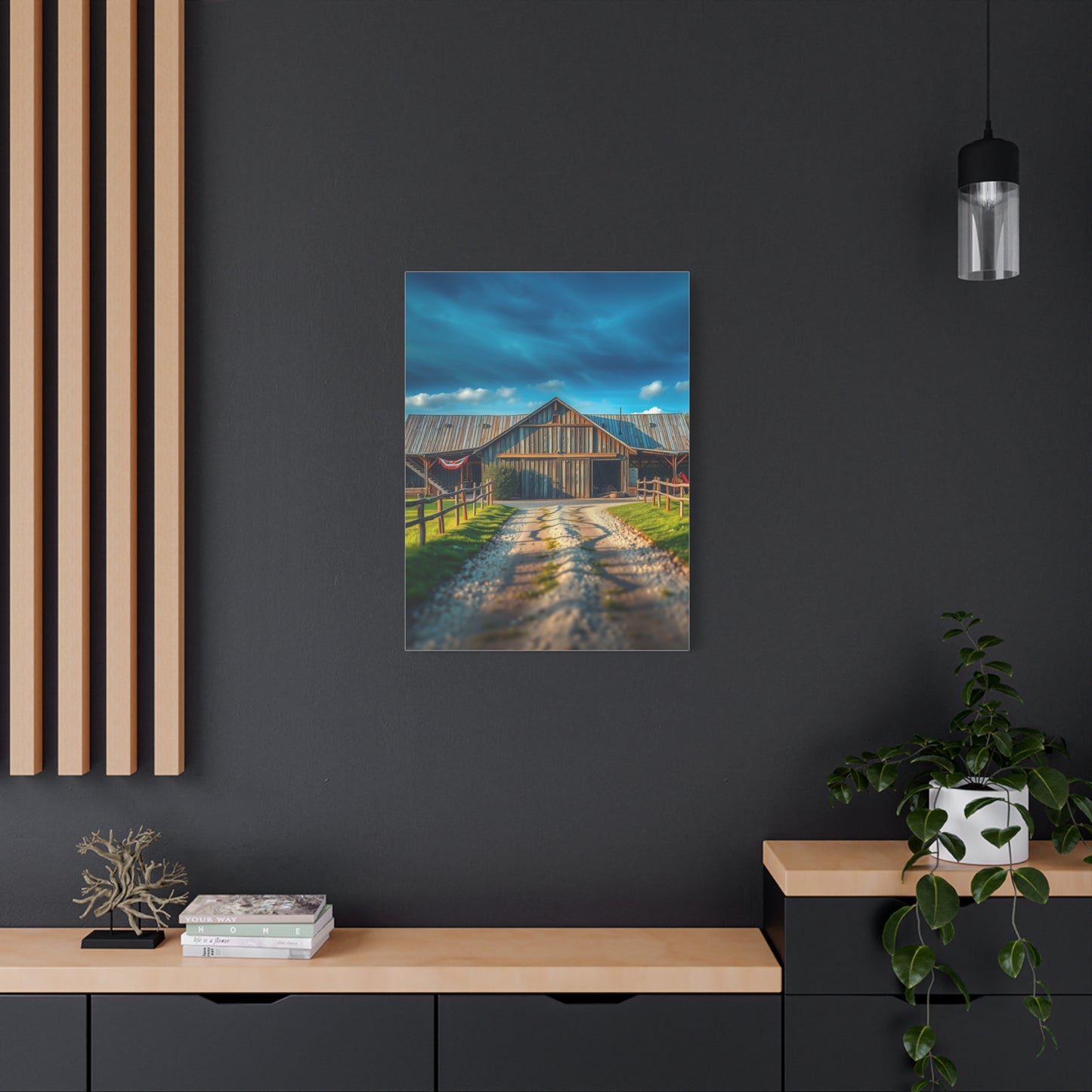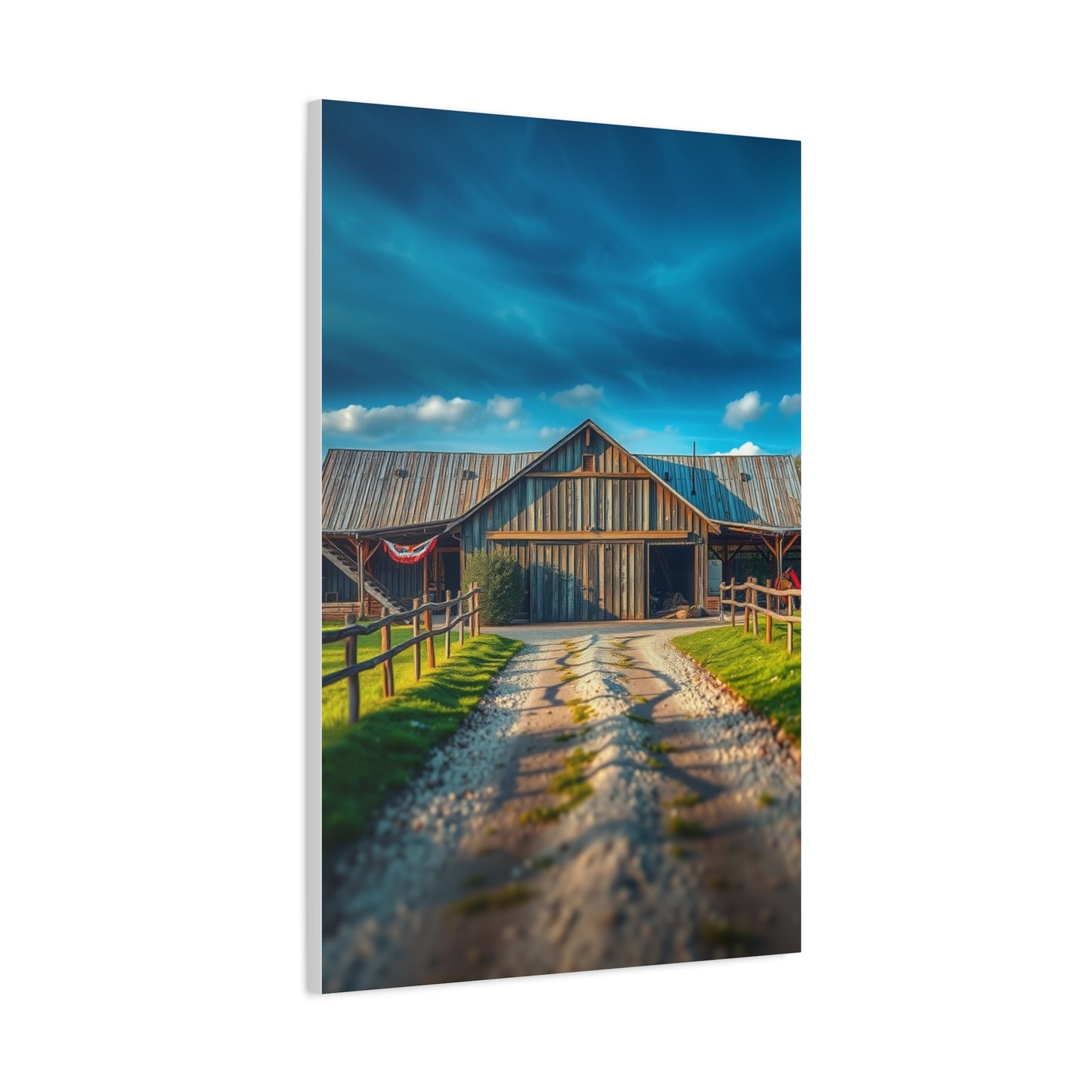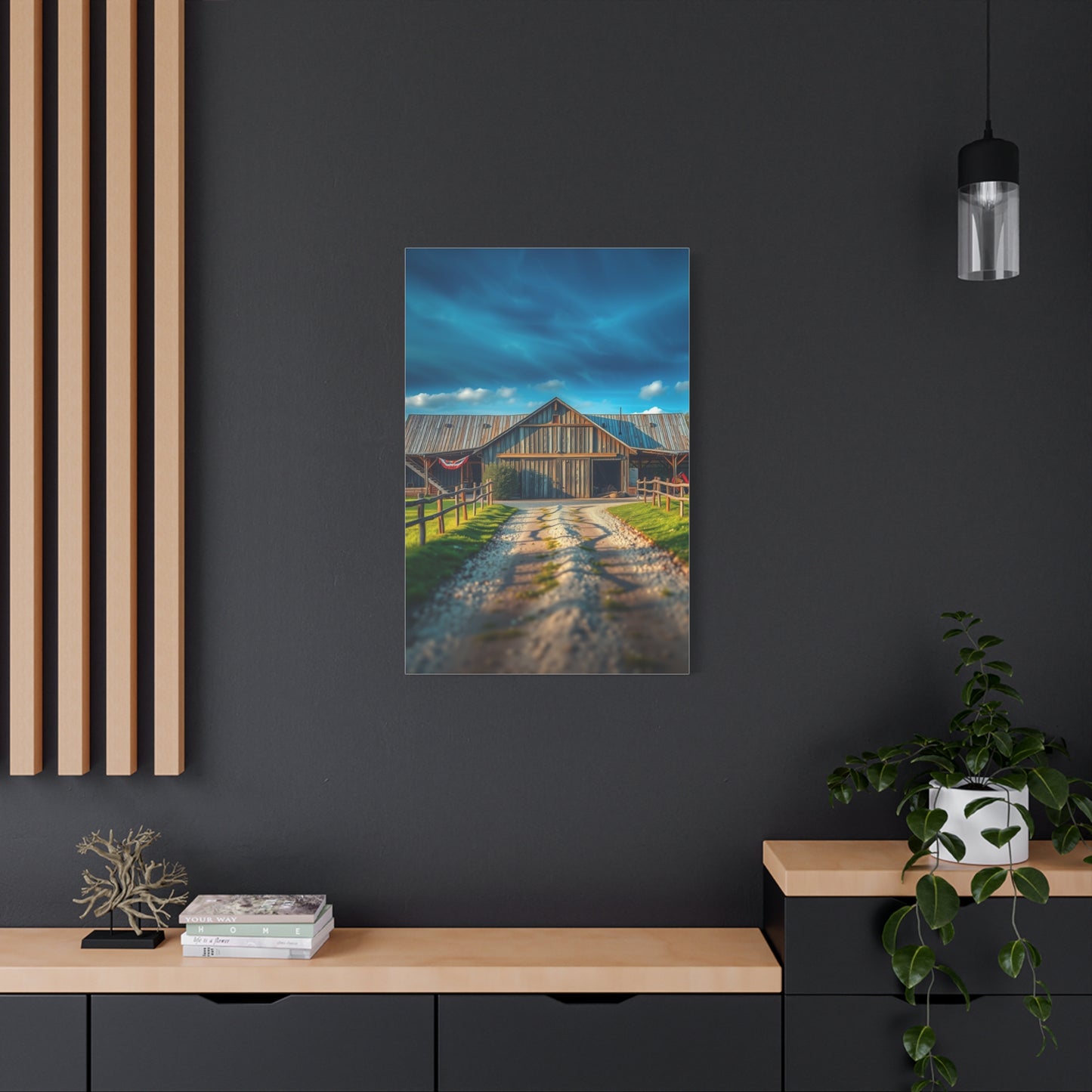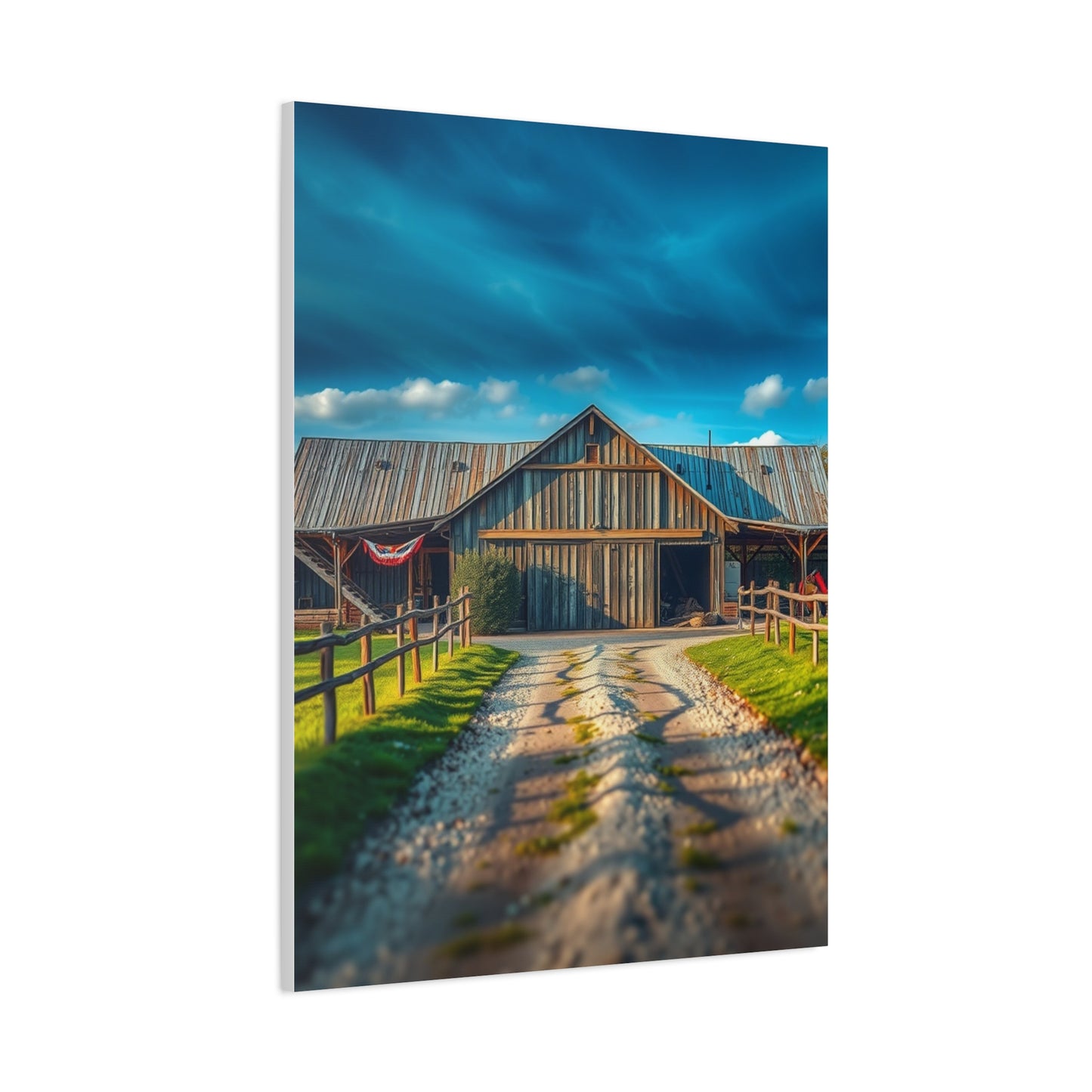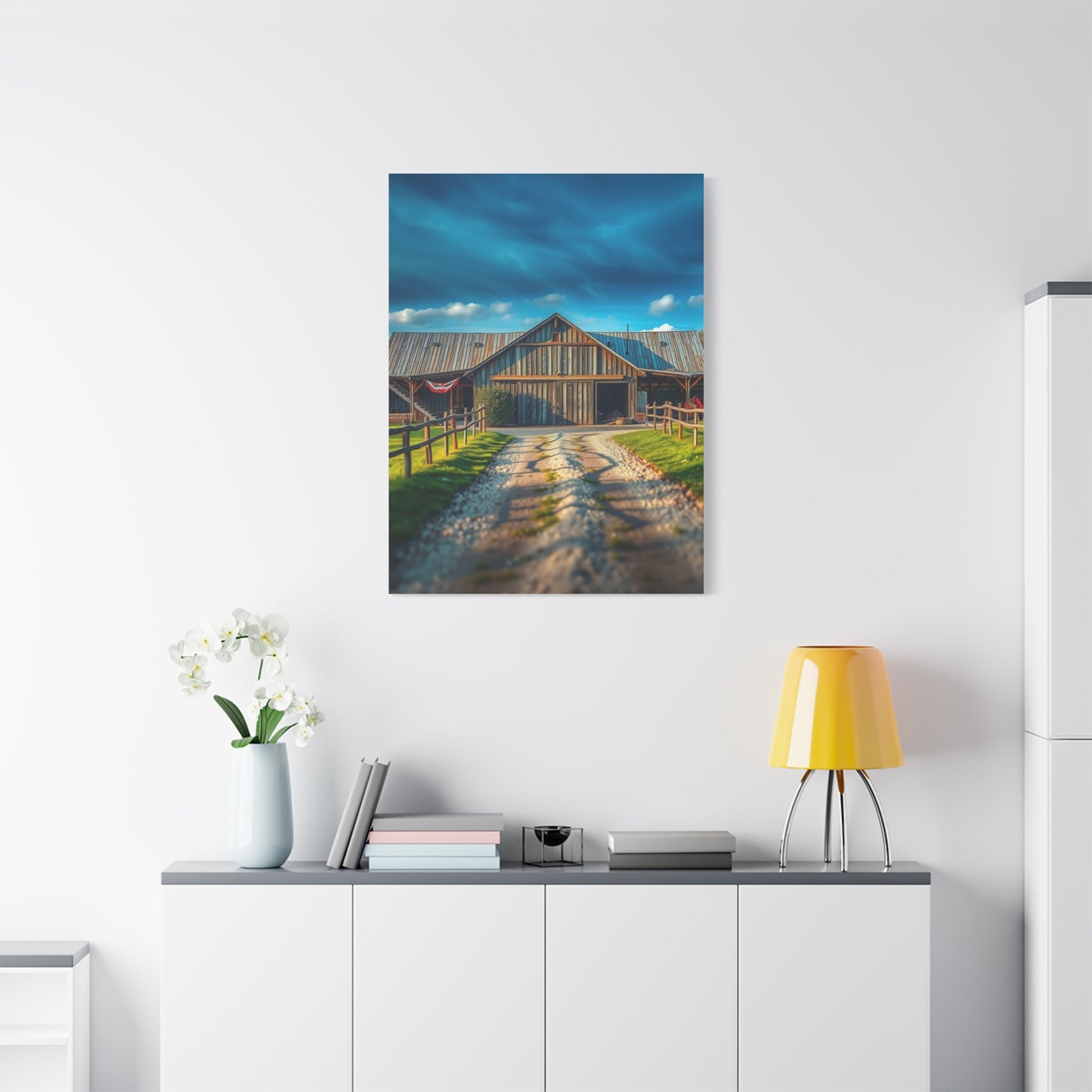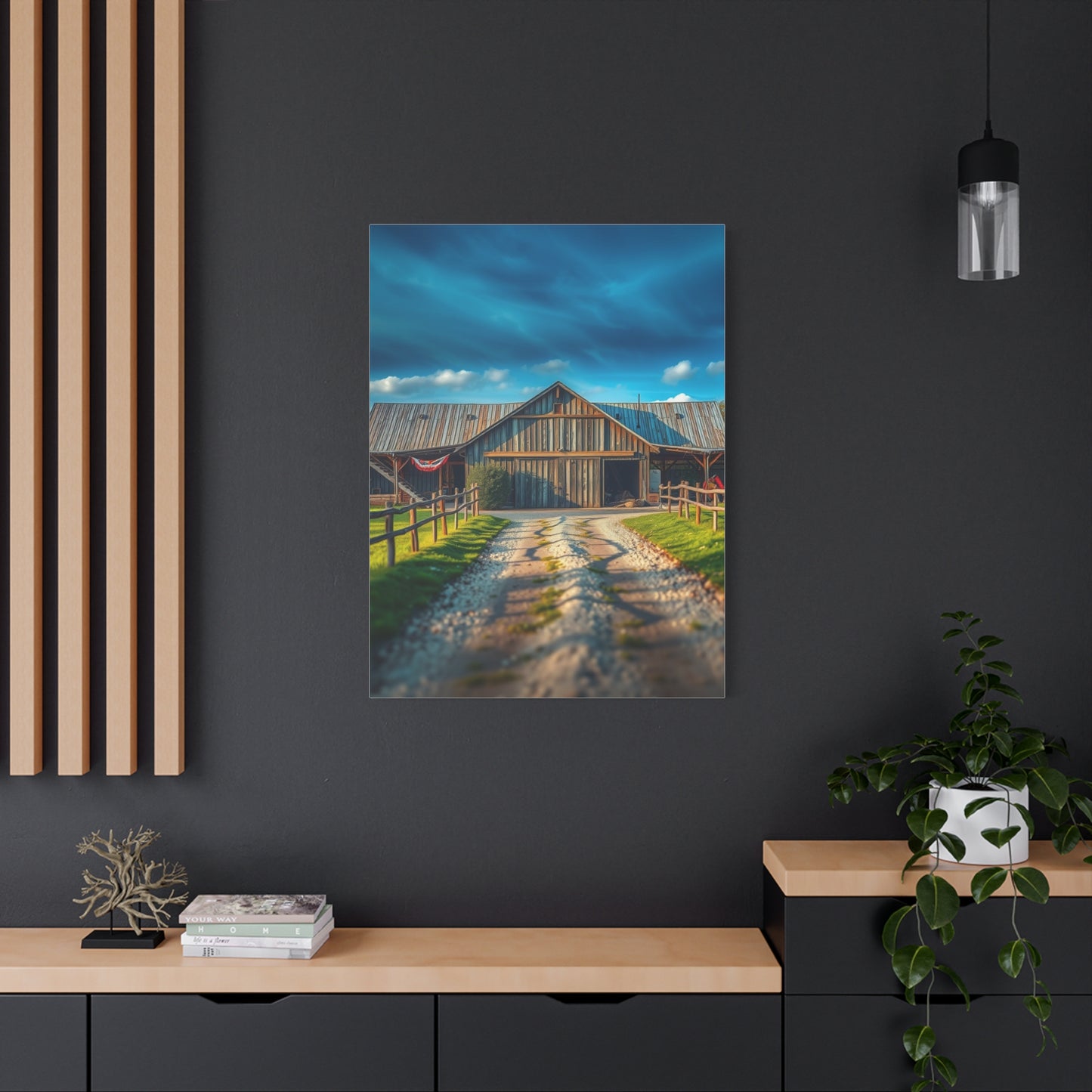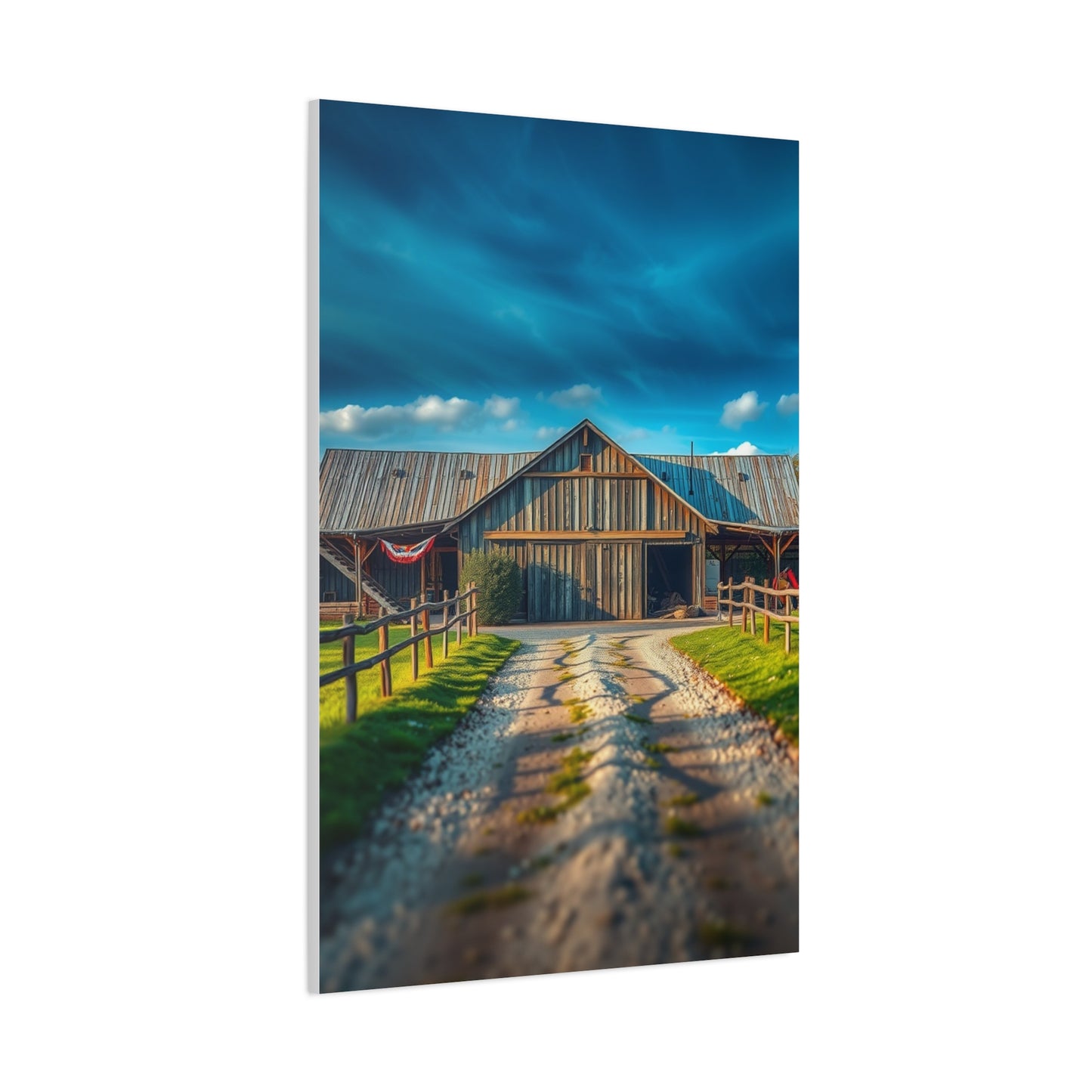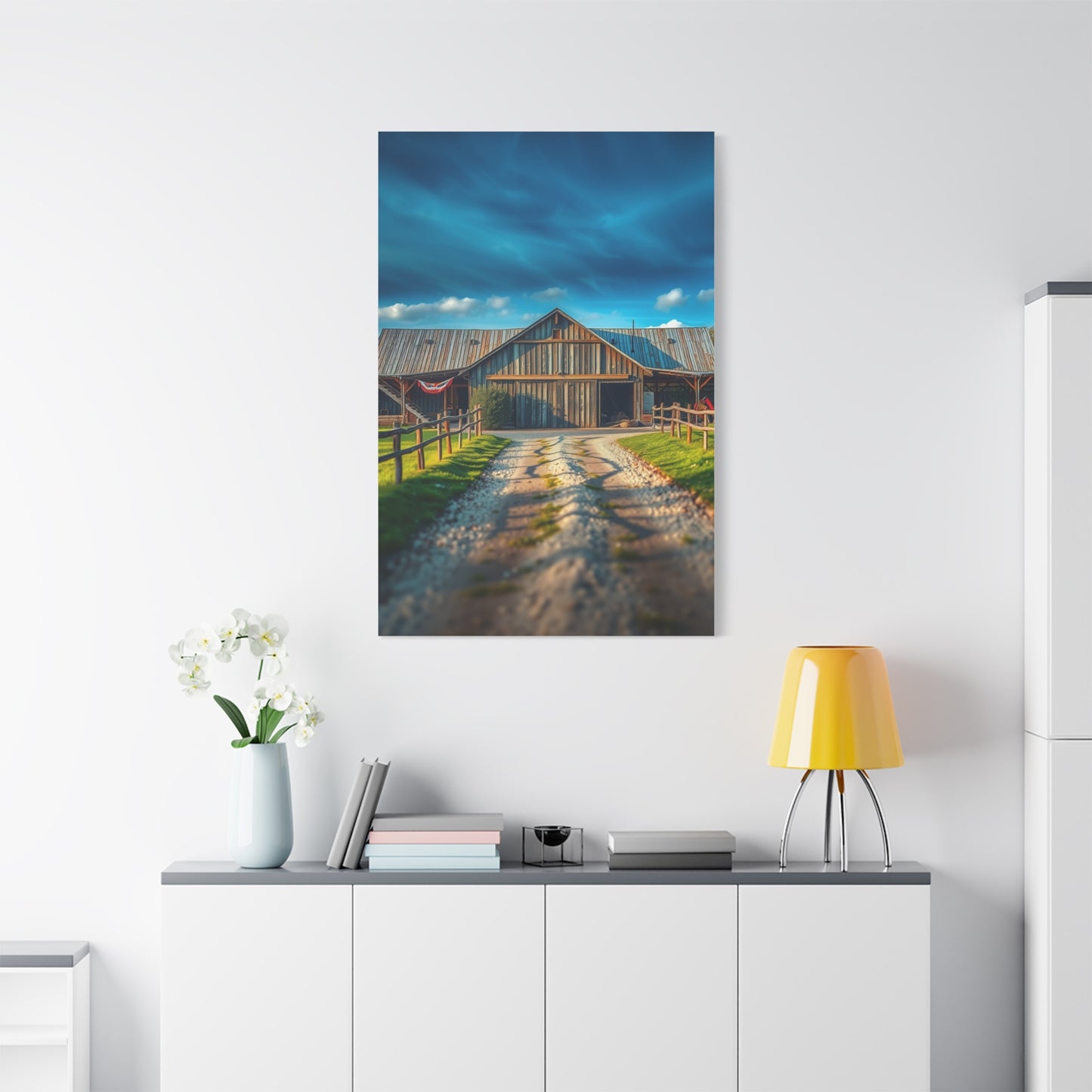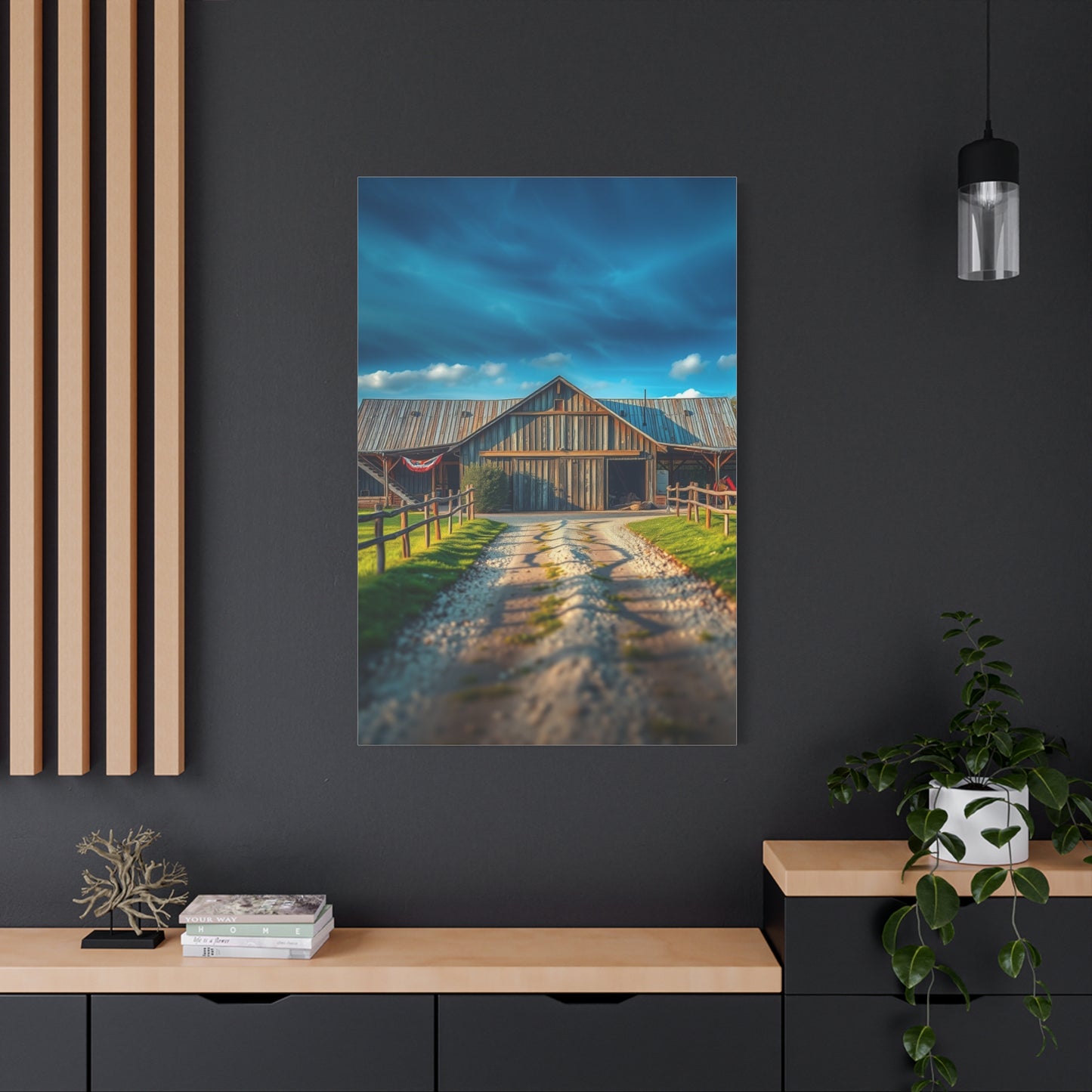Classic Barnscape Exposition Wall Art: A Comprehensive Guide to Rustic Elegance in Home Decoration
The world of interior design constantly evolves, yet certain aesthetic themes maintain their timeless appeal across generations. Among these enduring styles, rustic farmhouse decor continues to captivate homeowners and decorators alike, offering warmth, nostalgia, and a connection to simpler times. Within this beloved design category, classic barnscape exposition wall art canvas prints have emerged as a particularly compelling choice for those seeking to infuse their living spaces with authentic countryside charm and visual storytelling.
These artistic representations of rural architecture and pastoral landscapes transcend mere decoration, functioning as windows into a bygone era when life moved at a gentler pace. The appeal of barnscape imagery lies in its ability to evoke powerful emotions and memories, whether personal experiences of country living or an idealized vision of agricultural heritage. Through carefully composed scenes featuring weathered wooden structures, expansive fields, and timeless rural vistas, these canvas prints bring the serenity and authenticity of farm life into contemporary homes.
The technical execution of these artworks combines traditional subject matter with modern printing technology, resulting in museum-quality reproductions that capture every nuance of texture, color, and atmospheric detail. High-resolution printing techniques ensure that the grain of aged wood, the subtle variations in sky tones, and the delicate interplay of light and shadow are faithfully rendered on premium canvas materials. This marriage of old-world subject matter and cutting-edge production methods creates wall art that satisfies both aesthetic and practical requirements for today's discerning homeowners.
Understanding the multifaceted appeal of classic barnscape exposition wall art requires exploration of numerous dimensions including artistic composition, cultural significance, decorative applications, quality considerations, and styling possibilities. This comprehensive examination delves into every aspect of these remarkable decorative pieces, providing insights that will help you make informed decisions about incorporating barn-themed canvas prints into your interior design projects.
The Historical Significance of Barn Architecture in American Culture
Barn structures have occupied a central position in American agricultural history for centuries, serving as both functional necessities and architectural landmarks that define rural landscapes. These impressive edifices were typically the largest and most substantial buildings on farm properties, representing significant investments of labor, materials, and craftsmanship. The construction of a barn was often a community event, with neighbors gathering for traditional barn raisings that strengthened social bonds while accomplishing essential agricultural infrastructure development.
Different regions developed distinctive barn styles reflecting local building traditions, available materials, and specific agricultural purposes. The classic red barn with white trim became an iconic symbol throughout much of the northern United States, where dairy farming predominated. These structures featured gambrel roofs that maximized storage capacity for hay and grain while providing adequate interior space for livestock. The traditional red color emerged from practical considerations, as farmers mixed readily available iron oxide with linseed oil to create an affordable, durable paint that protected wood from weathering and decay.
In contrast, tobacco barns throughout Kentucky, Tennessee, and North Carolina developed their own characteristic features including vertical board construction with deliberate gaps for air circulation during the curing process. Pennsylvania witnessed the development of the distinctive bank barn design, built into hillsides to provide ground-level access to multiple floors. These architectural variations tell stories of adaptation to climate, topography, and agricultural specialization that shaped regional identities.
Beyond their practical functions, barns became repositories of family history and generational continuity. Many structures remained in active use for over a century, sheltering multiple generations of farm families and their livestock. The physical endurance of well-built barns testifies to the skill of their creators and the quality of traditional construction methods that prioritized longevity over expedience. Today, as agricultural practices have industrialized and small family farms have declined, these remaining structures have acquired additional cultural value as tangible connections to our agricultural heritage.
The emotional resonance of barn imagery extends beyond those with direct farming experience. These buildings have become powerful symbols in American consciousness, representing values of hard work, self-sufficiency, connection to the land, and simpler living. This symbolic dimension explains much of the appeal of barnscape wall art, which allows urban and suburban dwellers to maintain a connection, however tenuous, with rural traditions and pastoral ideals that continue to exert psychological and aesthetic appeal in our increasingly urbanized society.
Artistic Elements That Define Compelling Barnscape Compositions
Creating visually compelling barnscape artwork requires careful attention to fundamental principles of composition, lighting, perspective, and atmospheric rendering. The most successful pieces balance multiple elements to create images that are simultaneously realistic and evocative, capturing not just the physical appearance of rural structures but also the mood and character that make these scenes emotionally resonant.
Compositional structure forms the foundation of effective barnscape imagery. Artists typically employ established principles such as the rule of thirds, which positions the primary subject slightly off-center to create more dynamic and engaging arrangements. The barn itself usually occupies a prominent but not completely dominant position within the frame, with surrounding landscape elements providing context and balance. Foreground elements such as fence lines, pathways, or fields create visual depth and lead the viewer's eye toward the main subject, while background features including distant hills, tree lines, or sky formations complete the spatial environment.
Lighting represents perhaps the most critical factor in establishing mood and atmosphere within barnscape compositions. Golden hour illumination, occurring shortly after sunrise or before sunset, bathes rural scenes in warm, directional light that emphasizes textures and creates long shadows that add dimensionality. Many of the most beloved barnscape images capture these magical lighting conditions when the quality of light transforms ordinary subjects into extraordinary visual experiences. Alternatively, overcast conditions can produce softer, more subtle lighting that emphasizes form over detail and creates contemplative, sometimes melancholic atmospheres.
Seasonal variation offers another dimension for artistic expression within barnscape photography and painting. Winter scenes featuring snow-covered roofs and bare trees surrounding weathered structures create stark, dramatic contrasts between organic and architectural forms. Spring compositions might include emerging vegetation and fresh greenery that symbolize renewal and growth. Summer imagery typically showcases lush surrounding landscapes with full foliage and abundant agricultural activity, while autumn scenes offer spectacular opportunities to incorporate the rich golds, oranges, and reds of changing leaves alongside harvest-time activities.
Color palette selection profoundly influences the emotional impact of barnscape artwork. Traditional approaches emphasize earth tones including various browns, grays, and greens that reflect the natural materials and landscape elements typical of rural settings. However, artists may choose to enhance or modify these base colors to achieve specific aesthetic effects. Some contemporary interpretations employ more saturated or stylized color treatments that push beyond strict realism toward more interpretive or decorative approaches. The weathered red of traditional barn paint provides a particularly powerful focal point, creating visual interest through contrast with surrounding landscape elements.
Textural detail contributes significantly to the authenticity and visual richness of barnscape imagery. The weathered wood grain of aged siding, the irregular patterns of peeling paint, the geometric precision of board-and-batten construction, and the rough texture of fieldstone foundations all provide visual interest at multiple scales. Quality canvas prints must faithfully reproduce these textural elements to maintain the tactile quality that makes barn imagery so compelling. The interplay between smooth and rough surfaces, between regular geometric patterns and organic irregular forms, creates visual complexity that rewards extended viewing.
Understanding Canvas Print Technology and Quality Indicators
The technical aspects of canvas print production dramatically affect the final appearance, longevity, and overall quality of barnscape wall art. Understanding these technical dimensions helps consumers make informed purchasing decisions and appreciate the factors that distinguish premium products from inferior alternatives in an increasingly crowded marketplace.
Digital printing technology has revolutionized fine art reproduction, making museum-quality prints accessible at previously unimaginable price points. Modern inkjet printers designed specifically for fine art applications employ multiple ink cartridges that can produce millions of distinct colors through precise mixing of base pigments. Professional-grade printers typically use eight to twelve separate ink colors, including light and dark versions of cyan, magenta, and yellow, plus multiple black and gray inks that ensure smooth tonal gradations in shadow areas. This expanded color gamut allows faithful reproduction of subtle color variations that would be impossible with simpler four-color printing processes.
The archival quality of inks used in canvas print production determines how long the artwork will maintain its original appearance when displayed under normal conditions. Pigment-based inks offer far superior longevity compared to dye-based alternatives, resisting fading from ultraviolet light exposure and atmospheric pollutants that gradually degrade lesser materials. Premium pigment inks can maintain color integrity for over a century when properly displayed, while inferior dye-based inks may show visible fading within just a few years. This distinction becomes particularly important for barnscape artwork intended as long-term decorative investments rather than temporary decorations.
Canvas substrate selection influences both the appearance and durability of finished prints. Professional-grade canvas materials are typically manufactured from cotton or polyester fibers, or blends combining both materials. Pure cotton canvas offers a traditional texture and appearance similar to materials used for original paintings, providing an authentic fine art presentation. Cotton canvas accepts and holds ink slightly differently than synthetic alternatives, sometimes producing softer, more organic-looking results. Polyester canvas, while lacking the historical associations of cotton, offers certain practical advantages including greater dimensional stability, resistance to moisture-related problems, and sometimes superior ink receptivity that produces sharper detail.
The weight and weave density of canvas material affect how it performs during printing and stretching. Heavier canvases with higher thread counts provide smoother, more refined surfaces that capture fine details more precisely, making them ideal for barnscape images that feature intricate architectural elements or distant landscape details. However, lighter canvases may be preferable for larger prints where weight becomes a practical consideration for hanging. The visible weave texture should complement rather than compete with image detail, remaining visible enough to provide the characteristic canvas appearance while not interfering with the perception of fine details.
Coating treatments applied to canvas before printing dramatically influence ink absorption, color vibrancy, and surface durability. These specialized coatings create a receptive surface that allows ink to sit on top of the canvas fibers rather than soaking deeply into the material, resulting in brighter colors and sharper details. Different coating formulations produce varying surface finishes ranging from matte to semi-gloss to high-gloss sheens. For barnscape imagery, matte or semi-gloss finishes typically work best, avoiding the distracting reflections that glossy surfaces can create while still providing adequate protection and color saturation.
Print resolution determines how much detail can be faithfully reproduced in the final canvas print. Professional fine art printing requires very high-resolution source images, typically at least three hundred dots per inch at the intended display size. Lower resolution images may appear acceptably sharp when viewed on computer screens but reveal disappointing softness, pixelation, or lack of fine detail when printed at large sizes. Quality barnscape prints should capture intricate details such as individual weathered boards, distant tree branches, and subtle texture variations that contribute to realistic, engaging presentations.
Stretching Methods and Mounting Techniques for Canvas Prints
The manner in which printed canvas is stretched and mounted significantly impacts its final appearance, stability, and presentation quality. Professional stretching techniques ensure that canvas remains taut and flat, displaying printed imagery without distortions, wrinkles, or sagging that would diminish visual appeal and perceived quality.
Gallery wrap construction represents the most popular stretching method for contemporary canvas prints. This technique involves wrapping printed canvas around wooden stretcher bars so that the image continues around the edges of the frame, eliminating the need for additional framing. Gallery wrapped canvases can be hung directly on walls, creating a clean, modern presentation particularly well-suited to contemporary and transitional interiors. The depth of stretcher bars, typically ranging from three-quarters of an inch to two inches or more, affects the visual impact of the piece, with deeper bars creating more substantial shadow lines and greater dimensional presence.
When evaluating gallery wrap construction, edge finishing becomes an important consideration. The highest quality approach prints the image large enough that it continues naturally around the sides of the stretcher bars, maintaining visual coherence from any viewing angle. Alternative approaches include mirrored edges, where portions of the image near the borders are reflected onto the sides, or solid color edges that complement the dominant tones of the artwork. For barnscape imagery, continuing the natural scene around the edges typically produces the most authentic and aesthetically pleasing results.
The construction quality of stretcher bar frames directly influences how well canvas maintains its tension over time. Premium stretcher bars are manufactured from kiln-dried hardwoods that resist warping, twisting, and dimensional changes that could create slack areas or distortions in the stretched canvas. Finger-jointed corners provide stronger construction than simpler butt joints, ensuring that the frame maintains its rectangular shape under the continuous tension of stretched canvas. Some high-end stretcher systems include expandable corners with small wooden wedges that can be tapped deeper into the joints to restore canvas tension if minor slackening occurs after years of display.
Canvas thickness and the force applied during stretching must be carefully balanced. Insufficient tension leaves canvas slightly loose, potentially creating visible undulations or sag, particularly in larger pieces. Excessive tension, however, risks distorting the stretcher frame or even tearing canvas at stress points. Professional stretching requires experience to achieve optimal results, particularly for larger barnscape prints where the absolute forces involved become substantial. Machine stretching provides consistent tension distribution, while hand stretching allows for subtle adjustments that may be necessary for particular artworks.
Mounting hardware installation deserves careful attention to ensure secure, level hanging. Gallery-wrapped canvases typically include wire hanging systems or D-rings attached to the back of the stretcher frame. Heavy-duty hanging wire, properly attached to secure screw eyes or D-rings positioned one-third of the way down from the top edge, provides reliable support for most canvas prints. Very large or heavy pieces may require multiple attachment points or French cleat systems that distribute weight across longer wall areas and provide exceptional stability.
Alternative mounting approaches include floating frames that surround gallery-wrapped canvases with decorative borders slightly separated from the canvas edges, creating the impression that the artwork floats within the frame. This technique adds traditional framing elegance while maintaining the contemporary aesthetic of gallery-wrapped presentation. For barnscape artwork destined for traditional or formal interiors, this approach can bridge aesthetic preferences, satisfying both appreciation for rustic subject matter and preference for more conventional framing presentations.
Decorating Styles That Complement Barnscape Wall Art
Barnscape canvas prints demonstrate remarkable versatility, enhancing numerous decorating styles while maintaining particular affinity with certain aesthetic approaches. Understanding these stylistic relationships helps ensure successful integration of rural architectural imagery within various interior design contexts.
Farmhouse style represents the most natural decorating context for barnscape wall art, as the aesthetic philosophy underlying this approach directly aligns with the values and visual vocabulary represented in barn imagery. Modern farmhouse interiors combine rustic elements with contemporary sensibilities, creating comfortable, unpretentious spaces that celebrate craftsmanship, natural materials, and connections to agricultural heritage. Within this context, barnscape prints reinforce thematic coherence while providing focal points that draw the eye and anchor decorative arrangements. Pairing barn imagery with shiplap walls, exposed beams, reclaimed wood furniture, and vintage accessories creates powerfully unified spaces that feel authentically rooted in rural traditions.
Country style decorating, while related to farmhouse aesthetics, typically embraces more traditional, sometimes more ornate approaches. This style often incorporates more color, pattern, and decorative detail than minimalist modern farmhouse interpretations. Barnscape artwork integrates beautifully within country interiors, complementing quilts, floral patterns, antique furniture, and collections of vintage farm implements and kitchen equipment. The naturalistic imagery provides visual rest areas within busier decorative schemes while reinforcing thematic connections to rural life and agricultural heritage.
Industrial style, characterized by exposed structural elements, metal accents, concrete surfaces, and utilitarian furnishings, might initially seem incompatible with pastoral barn imagery. However, barnscape prints can create compelling contrasts within industrial spaces, introducing organic warmth and historical references that soften harder-edged contemporary elements. The aged, weathered quality of barn structures shares aesthetic common ground with the deliberately unfinished appearance of industrial design, creating unexpected harmonies. This juxtaposition works particularly well in converted loft spaces or urban homes where residents seek to maintain connections with rural roots while embracing contemporary urban living.
Rustic style embraces natural materials, rough-hewn textures, and organic forms that celebrate the beauty of minimally processed materials. Log homes, mountain retreats, and cabins provide ideal settings for barnscape wall art, which reinforces the overarching aesthetic philosophy while introducing architectural references that complement rather than replicate the surrounding design language. Within these contexts, barn imagery can provide interesting counterpoints to wilderness themes, reminding viewers that rural agricultural landscapes represent a middle ground between untamed nature and fully urbanized environments.
Transitional style seeks to bridge traditional and contemporary design approaches, combining elements of both to create balanced, broadly appealing spaces. Barnscape canvas prints work exceptionally well within transitional interiors, as the subject matter carries traditional associations while gallery-wrapped presentation maintains contemporary sensibilities. This dual nature allows barn imagery to function effectively in spaces that might prove challenging for more style-specific artwork. Neutral color palettes typical of much barnscape photography complement the restrained color schemes often favored in transitional design.
Contemporary style, while seemingly distant from rural subject matter, can incorporate barnscape imagery effectively when the artistic treatment aligns with modern aesthetic preferences. Highly stylized or abstract interpretations of barn subjects, perhaps emphasizing geometric forms, bold color treatments, or unusual perspectives, can satisfy contemporary aesthetic requirements while maintaining connections to recognizable rural imagery. Even more representational barnscape prints can function successfully in contemporary spaces when scale, color palette, and presentation align with the overall design approach.
Size Selection Strategies for Different Spaces and Applications
Choosing appropriate sizes for barnscape canvas prints requires consideration of multiple factors including room dimensions, wall space, viewing distances, and desired visual impact. Properly sized artwork creates balanced, proportional presentations that enhance rather than overwhelm or get lost within interior spaces.
Small canvas prints, typically ranging from twelve to twenty-four inches in their longest dimension, work well for intimate spaces, narrow walls, and locations where viewing distances remain relatively short. These compact sizes suit powder rooms, hallways, small offices, bedrooms, and areas above furniture pieces where available wall space is limited. Small barnscape prints can also be effectively grouped to create gallery wall arrangements that provide greater combined visual impact while maintaining flexibility for arrangement and future modifications.
Medium-sized prints, approximately twenty-four to forty inches across, represent versatile choices suitable for many residential applications. These intermediate dimensions provide sufficient scale to function as focal points in living rooms, dining rooms, bedrooms, and offices without requiring the extensive wall space necessary for larger pieces. Medium prints work particularly well above sofas, beds, consoles, and buffets where they can relate proportionally to furniture while commanding adequate attention. This size range offers good value, providing substantial visual impact at more accessible price points than very large prints.
Large canvas prints, measuring forty to sixty inches or more in their longest dimension, create dramatic statements that immediately capture attention and establish strong focal points within spacious rooms. These substantial pieces suit great rooms, master bedrooms, dining rooms, and entry halls where ample wall space allows their full impact to be appreciated. Large barnscape prints work especially well in spaces with high ceilings or open floor plans where smaller artwork might appear insignificant. The impressive scale allows viewers to appreciate fine details and subtle atmospheric qualities that might be less apparent in smaller reproductions.
Oversized prints, extending beyond sixty inches and sometimes reaching eight feet or larger, represent special-purpose applications for commercial settings, large residential spaces, or situations requiring maximum visual impact. These monumental pieces demand extensive wall space and appropriate viewing distances to be properly appreciated. When successfully deployed, oversized barnscape prints can transform entire rooms, creating immersive visual experiences that transport viewers into represented landscapes. Technical requirements for printing, shipping, and installing such large pieces typically increase costs and complexity substantially.
Vertical versus horizontal orientation significantly affects how barnscape prints relate to spaces and furniture. Horizontal landscapes, the most common format for barnscape imagery, complement horizontal furniture lines and work naturally above sofas, beds, and tables. Vertical orientations, while less common for landscape subjects, can be highly effective for emphasizing tall barn structures, creating visual interest on narrow walls, or balancing tall windows and doorways. Square formats, increasingly popular in contemporary design, offer compositional balance and work well in both traditional arrangements and modern grid-based gallery walls.
Multi-panel compositions divide single images across multiple canvas sections, creating dynamic presentations with contemporary appeal. Triptychs divide scenes across three panels, while polyptychs employ four or more sections. These segmented arrangements add visual interest through the spacing between panels and the interruption of continuous imagery. For barnscape subjects, multi-panel treatments can emphasize horizontal sweep across rural landscapes or highlight specific architectural features by isolating them within individual panels. The spaces between panels require careful consideration during installation to maintain proper image registration and aesthetic balance.
Color Palette Analysis for Barnscape Imagery
The color characteristics of barnscape wall art profoundly influence its compatibility with various interior design schemes and its psychological impact on viewers. Understanding the color dimensions of barn imagery helps guide selection decisions that will create harmonious, intentional decorative results.
Earthy brown tones dominate many barnscape compositions, reflecting the natural wood materials from which most historic barns were constructed. These browns range from rich, warm chestnuts and siennas in relatively well-preserved structures to cooler, grayed taupes and weathered gray-browns in more deteriorated buildings. The predominance of brown tones creates automatic compatibility with wood furniture, flooring, and trim common in many homes. These neutral earth colors provide flexible foundations that work with virtually any accent color scheme, from vibrant jewel tones to soft pastels to monochromatic arrangements.
The iconic barn red, technically a shade of vermillion or iron oxide red, provides powerful focal color in many barnscape images. This distinctive hue emerged from practical considerations but has become strongly associated with rural Americana. The warm red creates strong visual interest and emotional warmth, particularly effective during autumn and winter seasons. Rooms decorated primarily in neutrals benefit especially from the color intensity that red barn imagery introduces, while interiors already incorporating red accents achieve enhanced thematic coherence. The specific shade of barn red varies considerably, from bright cherry tones to darker rust and burgundy hues, allowing selection based on existing color schemes.
White trim elements including window frames, door surrounds, and board-and-batten accents provide crisp contrast against darker barn walls in many images. These white elements create visual definition and architectural detail while lightening overall compositions. The presence of white allows barnscape prints to integrate successfully with white or light-colored walls without creating insufficient contrast. Cream and off-white variations appear in some compositions, offering slightly warmer alternatives to bright white that may coordinate more successfully with aged or distressed decorative schemes.
Green landscape elements including grass, trees, and other vegetation form crucial components of barnscape compositions, connecting architectural subjects to their natural settings. These greens span enormous range, from rich emerald and forest greens of summer foliage to softer sage and olive tones of drought-stressed or autumn vegetation. The specific green tones significantly affect mood and seasonal associations of images. Vibrant greens suggest vitality, growth, and abundant summer, while muted gray-greens evoke more contemplative, weathered character. These landscape greens provide opportunities for color coordination with plants, upholstered furniture, and decorative accessories.
Sky colors contribute substantially to the mood and atmosphere of barnscape imagery despite often occupying less area than ground elements. Clear blue skies create optimistic, cheerful impressions suitable for spaces where positive emotional tone is desired. Overcast gray skies produce more subdued, contemplative moods. Dramatic storm skies with dark clouds provide high-contrast backgrounds that emphasize barn structures through tonal separation. Golden and pink sunset skies introduce warm color that flatters interior spaces and creates romantic, nostalgic atmospheres particularly effective in bedrooms and dining areas.
Monochromatic treatments including sepia tones, true black-and-white, and various tinted monochrome approaches offer alternatives to full-color barnscape imagery. These simplified color schemes emphasize form, texture, composition, and tonal relationships while eliminating potential color coordination challenges. Monochromatic barn prints integrate seamlessly with virtually any color scheme, making them particularly valuable for rooms with strong existing color commitments or frequently changing decorative accessories. The timeless quality of black-and-white imagery often enhances the historical associations inherent in barn subjects.
Thematic Variations Within Barnscape Artwork
Classic red barn compositions represent the most iconic and immediately recognizable variation, celebrating the quintessential American farm building. These images typically feature well-maintained or moderately weathered structures in traditional red paint with white trim, often situated within active agricultural landscapes. The emotional associations skew positive and nostalgic, evoking idealized visions of productive family farms and wholesome rural life. These upbeat images work well in spaces where comfort, tradition, and positive emotional tone are desired.
Weathered and abandoned barn imagery explores the opposite end of the preservation spectrum, featuring structures in various stages of deterioration. Peeling paint, missing boards, sagging rooflines, and encroaching vegetation create melancholic beauty that appeals to viewers drawn to themes of impermanence, the passage of time, and nature's reclamation of human constructions. These more somber images can create contemplative atmospheres suitable for studies, libraries, and spaces designed for reflection. The increased textural interest and tonal complexity of deteriorated structures often produces visually rich compositions.
Winter barnscape scenes featuring snow-covered structures and surrounding landscapes create dramatic seasonal statements. The stark contrast between dark barn walls and bright snow produces high-impact compositions with strong graphic quality. Bare trees, crisp shadows on snow, and often-included elements like footprints or animal tracks add visual interest and narrative suggestions. These cold-weather scenes work particularly well in spaces with cool color schemes or where seasonal decoration rotation occurs, though their appeal extends year-round for many viewers.
Sunset and sunrise barnscapes emphasize atmospheric lighting conditions that transform ordinary subjects into extraordinary visual experiences. The warm, directional quality of golden hour light creates glowing skies, long shadows, and richly colored highlights on architectural features. These magical lighting conditions produce romantic, optimistic moods suitable for bedrooms, dining rooms, and other spaces where emotional warmth is desired. The technical challenge of capturing these fleeting conditions means truly exceptional examples command premium interest.
Interior barn views offer alternative perspectives, looking inside structures to reveal architectural framing, stored equipment, hay bales, and the interplay of exterior light filtering through openings. These less common compositions appeal to viewers interested in architectural detail and more intimate perspectives. The strong geometric patterns of timber framing and the dramatic lighting contrasts between shadowed interiors and bright exterior views create distinctive visual interest. These interior perspectives work particularly well in studies, offices, and spaces where architectural appreciation predominates.
Seasonal agriculture scenes incorporate barns as components within broader compositions that include planting, harvesting, or other farm activities. Tractors, hay bales, corn fields, pumpkin patches, and orchards provide contextual elements that strengthen agricultural associations and narrative content. These more complex compositions appeal to viewers wanting more active, story-rich imagery compared to purely architectural presentations. The additional elements provide more color variation and visual complexity while maintaining focus on rural themes.
Quality Assessment Criteria for Canvas Print Selection
Image resolution and sharpness represent fundamental quality indicators immediately apparent during even casual examination. Premium prints should display crisp details throughout the image, from foreground elements to distant background features. Examine fine details such as individual boards, distant tree branches, and texture patterns under normal viewing conditions. Blurry or soft areas suggest inadequate source image resolution or printing limitations. Edge sharpness around defined forms provides particularly revealing evidence, as the boundaries between contrasting elements should appear clean and precise rather than fuzzy or pixelated.
Color accuracy and saturation determine how faithfully prints reproduce original artistic intent. Colors should appear natural and true-to-life unless deliberate stylization is part of the artistic approach. Flesh tones, sky colors, and familiar natural elements provide useful reference points for assessing color fidelity. Oversaturated, garish colors suggest poor color management or deliberate manipulation to create eye-catching but unrealistic results. Undersaturated, dull colors indicate inferior inks, poor printing, or faded materials. Color balance should appear neutral without obvious color casts toward warm or cool tones unless intentional for artistic effect.
Tonal range evaluation examines how well prints reproduce the full spectrum from deepest shadows to brightest highlights. Premium prints should maintain visible detail in shadow areas rather than collapsing to featureless black, while highlight areas should retain subtle tonal variations rather than blowing out to pure white. This extended dynamic range creates depth, dimensionality, and visual richness that inferior prints lack. The midtone regions between these extremes should display smooth gradations without visible banding or posterization effects that create harsh transitions between similar tones.
Canvas texture and weave quality affect both appearance and durability. Examine the canvas surface for consistent, uniform texture without irregularities, thin spots, or coarse areas that might interfere with image perception. The weave should be tight and even, with appropriate weight for the intended size. Run your hand gently across the surface to assess stiffness and quality, though avoid excessive handling of display models. The canvas should feel substantial and well-constructed rather than flimsy or overly flexible.
Coating quality determines surface durability and appearance. Quality coatings should be evenly applied without visible variations in sheen or texture. The surface should resist fingerprints and light handling without immediately showing marks. Matte or semi-gloss finishes are generally preferable for barnscape imagery, avoiding excessive reflectivity while providing adequate protection. Some protective coatings include UV-resistant additives that significantly extend fade resistance, though these may not be visually apparent and may require specification review to confirm.
Stretching quality becomes evident through careful inspection of how canvas wraps around stretcher bars. The canvas should be uniformly taut without loose areas, ripples, or dimples that indicate poor tensioning. Examine corners particularly carefully, as these stress points often reveal construction quality. The canvas should wrap smoothly around edges without bunching, puckering, or excessive distortion of printed imagery. Check that stretcher bars are properly squared with consistent right angles at corners, as skewed frames create visible distortions.
Edge finishing on gallery-wrapped prints determines appearance from side angles and overall presentation quality. Image continuity around edges should appear intentional and well-executed rather than awkwardly cropped or obviously compromised. If edges use mirrored or solid color treatments, these should be cleanly executed without visible irregularities. Staples or fasteners used to secure canvas to stretcher bars should be concealed from normal viewing angles and professionally installed without excessive quantities or irregular placement.
Caring for and Maintaining Canvas Print Artwork
Optimal display location selection represents the first and most important maintenance consideration. Avoid hanging canvas prints in direct sunlight, as ultraviolet radiation causes gradual fading even with quality pigment-based inks. East and west-facing windows present particular challenges due to strong direct sun during morning and evening hours. If display near windows is unavoidable, consider window treatments that filter UV light or position artwork away from direct sun paths. North-facing exposure typically presents minimal UV concerns. Artificial lighting should employ LED fixtures that emit minimal UV radiation compared to older incandescent or fluorescent sources.
Temperature and humidity considerations affect canvas dimensional stability and longevity. Avoid locations near heating vents, radiators, fireplaces, or air conditioning outlets where temperature fluctuations occur. These varying conditions cause canvas and wooden stretcher bars to expand and contract repeatedly, potentially creating slack areas or warping over time. Similarly, avoid high-humidity environments such as bathrooms and steamy kitchens where moisture can encourage mold growth or cause canvas sagging. Stable interior conditions between sixty and seventy-five degrees Fahrenheit with relative humidity between forty and fifty-five percent provide ideal long-term environments.
Regular dusting maintains appearance and prevents accumulation of particulate matter that can gradually degrade canvas surfaces. Use soft, dry microfiber cloths or specialized dusting tools that attract and hold dust particles rather than dispersing them. Dust gently using light, sweeping motions rather than rubbing or applying pressure. Avoid feather dusters that can snag on canvas texture or leave residues. Frequency depends on environmental conditions, but monthly dusting typically suffices for most residential settings. Commercial or high-traffic areas may require more frequent attention.
Spot cleaning for minor soiling should be approached cautiously to avoid damage. For most situations, dry cleaning with soft brushes or specialized dry-cleaning sponges designed for artwork provides the safest approach. If water-based cleaning becomes necessary, use distilled water applied sparingly with clean, white cotton cloths. Blot rather than rub, and allow areas to air dry completely. Avoid commercial cleaners, solvents, or detergents unless specifically designed for canvas artwork, as these can damage coatings or cause discoloration. For valuable or extensively soiled pieces, professional art cleaning services provide safer alternatives to DIY approaches.
Handling precautions prevent physical damage during relocation or cleaning. Always support canvas prints from the bottom and sides of the stretcher frame rather than grasping the canvas surface. Avoid touching the printed surface with bare hands, as skin oils can gradually cause discoloration. When removing prints for moving or storage, protect corners and edges with padding, as these vulnerable areas suffer damage easily during handling. For larger pieces, employ two-person handling to maintain control and prevent flexing that might stress stretcher joints or canvas.
Storage requirements for canvas prints awaiting display or during seasonal decoration rotation should maintain stable conditions similar to display recommendations. Store prints in climate-controlled spaces rather than attics, basements, or garages where temperature and humidity fluctuate dramatically. Keep canvas separated from concrete floors and exterior walls where moisture condensation might occur. Cover stored prints with clean cloth or acid-free paper to prevent dust accumulation while allowing air circulation. Store horizontally if possible, or vertically with adequate support. Never lean multiple canvases directly against each other for extended periods, as this can create pressure marks.
Styling and Arrangement Strategies for Maximum Impact
Furniture relationship principles guide proper size and placement decisions relative to underlying or adjacent furnishings. Artwork hung above sofas, beds, console tables, or buffets should typically span between two-thirds and three-quarters the width of the furniture piece below. This proportion creates visual connection while avoiding both insignificance and overwhelming scale. The bottom edge of canvas should typically hang eight to twelve inches above furniture tops, allowing adequate breathing room while maintaining relationship. For barnscape prints hung independently on walls without furniture below, standard gallery hanging height positions the center approximately fifty-seven to sixty inches from the floor, aligning with average eye level.
Complementary decor selections enhance thematic coherence and visual interest around barnscape prints. Vintage or reproduction farm implements, antique tools, galvanized metal containers, wooden crates, and similar rustic accessories strengthen rural themes while adding three-dimensional interest. Natural elements including cotton stems, wheat bundles, burlap fabrics, and weathered wood pieces create textural variety that prevents overly refined presentations. However, avoid excessive accessory accumulation that creates visual clutter rather than curated displays.
Lighting design dramatically affects how barnscape prints appear and the attention they command within spaces. Picture lights mounted directly on or above canvases provide focused illumination that enhances colors and creates gallery-quality presentations. Adjustable track lighting or directional recessed fixtures offer flexible alternatives allowing precise light positioning. Avoid lighting angles that create glare or reflections on canvas surfaces. Warm white LED bulbs with color temperatures around two thousand seven hundred to three thousand Kelvin complement the warm earth tones predominant in much barnscape imagery while providing excellent color rendering.
Grouping strategies for multiple canvas prints create customized displays with greater combined impact than individual pieces. Symmetrical arrangements of matching or coordinated barnscape prints create formal, balanced presentations suited to traditional interiors. Asymmetrical gallery walls incorporating various sizes and sometimes complementary subjects produce more casual, eclectic displays. When grouping multiple prints, maintain consistent spacing between pieces, typically two to six inches depending on overall scale. Consider using paper templates cut to exact dimensions when planning complex arrangements, allowing experimentation without leaving wall damage from repeated hanging attempts.
Conclusion
Classic Barnscape Exposition Wall Art represents the perfect intersection of rustic nostalgia and timeless sophistication. These artworks capture the essence of pastoral charm—the sweeping fields, weathered barns, and golden skies that speak of heritage and simplicity—while adding refined elegance to contemporary interiors. By integrating barnscape pieces into modern homes, homeowners achieve more than aesthetic appeal; they cultivate spaces imbued with warmth, authenticity, and a deep connection to the beauty of rural life. This unique genre of wall art transforms blank walls into narratives of tradition and tranquility, bridging the gap between rustic memory and modern design.
The enduring charm of barnscape art lies in its evocative storytelling. Each piece, whether a photographic print, oil painting, or digital canvas, communicates a mood—be it the quiet peace of dawn over a dewy field or the poetic decay of time-worn wood beneath a crimson sunset. The subject matter evokes familiarity and comfort, offering viewers a sense of grounding in a world often driven by speed and technology. Artists often use natural palettes—rich ochres, muted greens, deep browns, and warm neutrals—to create harmony and depth. This color balance makes barnscape wall art adaptable to diverse décor styles, from farmhouse and cottagecore to industrial-chic or transitional spaces that blend modern and traditional elements.
From an interior design standpoint, barnscape wall art serves as both focal point and mood setter. Large-scale canvases can dominate entryways, dining areas, or living rooms, anchoring the décor in organic texture and natural light. Smaller framed prints work beautifully in cozy corners, studies, or hallways, offering glimpses of serenity and nostalgia. The rustic imagery pairs exceptionally well with natural materials such as reclaimed wood, linen, stone, and wrought iron, creating cohesive visual narratives that invite comfort and relaxation. When balanced with sleek modern furnishings or metallic accents, the contrast elevates the artwork further—proving that rustic themes can coexist elegantly with contemporary sophistication.
Presentation and framing also play a key role in enhancing the rustic aesthetic. Distressed wooden frames complement barn-themed artwork perfectly, accentuating its heritage appeal and lending authenticity to the composition. Floating frames or minimalist borders, on the other hand, introduce a subtle modern twist, allowing the artwork to harmonize within more streamlined interiors. The versatility of barnscape pieces ensures that whether one’s goal is to create a countryside escape or a refined rustic-chic environment, these artworks adapt effortlessly to the desired vision.
Lighting brings barnscape artwork to life by emphasizing the nuances of texture, color, and shadow. Natural light enhances the earthy tones and subtle gradients of pastoral landscapes, while warm artificial lighting—such as sconces or picture lights—creates intimacy and highlights intricate details like brushstrokes and wood grain. The careful interplay of light and shadow deepens the sense of realism, drawing the viewer into the tranquil world the artist has captured. By treating lighting as an extension of design rather than an afterthought, homeowners can transform barnscape art from simple decoration into a living, breathing part of their environment.
Beyond its visual and spatial appeal, barnscape wall art resonates emotionally. It evokes a longing for simplicity, stability, and a connection to nature—values that hold universal appeal regardless of geography or lifestyle. The image of a rustic barn, framed against a vast sky or nestled among fields, reminds us of craftsmanship, endurance, and the quiet dignity of rural life. In an age dominated by sleek minimalism and digital design, barnscape art offers a moment of reprieve—a gentle reminder of authenticity, tradition, and human connection to the land. This emotional depth imbues spaces with warmth and meaning, transforming homes into havens of peace and reflection.
Ultimately, Classic Barnscape Exposition Wall Art stands as a tribute to rustic elegance and timeless design. Its ability to bridge natural simplicity with refined beauty makes it a perfect choice for homeowners seeking authenticity and character in their décor. Whether featured in a modern loft or a country cottage, these artworks harmonize tradition with sophistication, adding texture, depth, and soul to every room. By thoughtfully integrating barnscape art, one creates not just a visually pleasing home but a living space that honors history, celebrates craftsmanship, and embodies enduring serenity. In this way, rustic elegance becomes more than a design choice—it becomes a lifestyle statement of grace, balance, and heartfelt connection to the world’s natural beauty.

















